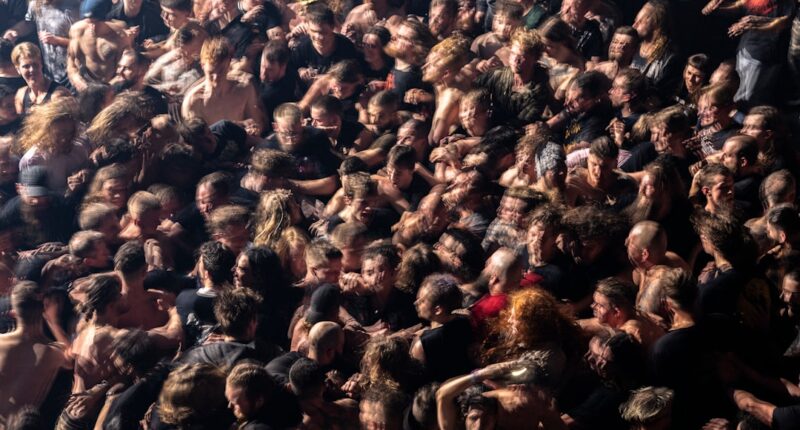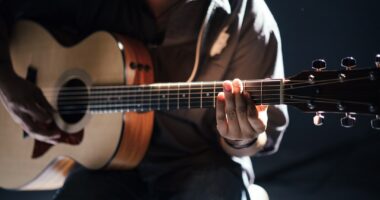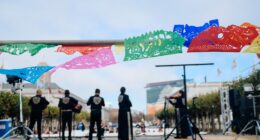In the ever-evolving landscape of music, understanding your target audience is paramount for any artist seeking to carve out a niche in the industry. The first step in this journey involves conducting thorough research to identify the demographics, preferences, and behaviors of potential listeners. This can include analyzing age groups, geographic locations, and even lifestyle choices that resonate with your music style.
For instance, a pop artist may find that their primary audience consists of teenagers and young adults who are active on social media platforms, while a jazz musician might appeal more to an older demographic that frequents live music venues. By delving into these details, artists can tailor their marketing strategies and content to better align with the interests and expectations of their audience, ultimately fostering a deeper connection. Moreover, understanding your target audience goes beyond mere demographics; it also encompasses the emotional and psychological factors that drive their music consumption.
Artists should strive to comprehend what their audience seeks in music—be it escapism, inspiration, or a sense of community. Engaging with fans through surveys, social media interactions, or even informal conversations can yield invaluable insights into their motivations and preferences. This knowledge allows artists to craft songs that resonate on a personal level, creating a bond that transcends the typical artist-listener relationship.
By recognizing the nuances of their audience’s desires, musicians can not only enhance their creative output but also cultivate a loyal fan base that feels seen and heard.
Key Takeaways
- Understanding your target audience is crucial for creating music and content that resonates with them.
- Utilize social media and online platforms to connect with your audience and promote your music.
- Collaborate with other artists and producers to expand your network and reach new audiences.
- Create engaging visual content to captivate your audience and enhance their overall experience.
- Leverage live performances and tours to connect with fans in person and build a strong fan base.
Utilizing Social Media and Online Platforms
Building Intimacy and Engagement
By leveraging platforms such as Instagram, TikTok, Twitter, and Facebook, artists can share snippets of their work, behind-the-scenes content, and personal stories that humanize them in the eyes of their followers. This level of accessibility fosters a sense of intimacy and engagement that can significantly enhance an artist’s visibility and relatability.
Shaping Music Trends and Informing Marketing Strategies
For instance, viral challenges on TikTok can propel a song into the mainstream consciousness overnight, demonstrating the power of social media in shaping music trends. Furthermore, online platforms provide artists with valuable analytics that can inform their marketing strategies. By tracking engagement metrics such as likes, shares, and comments, musicians can gauge which types of content resonate most with their audience.
Curating Playlists and Fostering Community
Additionally, platforms like Spotify and Apple Music offer artists the chance to curate playlists and engage with listeners through personalized recommendations. By actively participating in these digital spaces, artists not only promote their music but also create a dynamic dialogue with their audience, fostering a sense of community that is essential for long-term success.
Collaborating with Other Artists and Producers

Collaboration is a powerful tool in the music industry that can lead to innovative sounds and broaden an artist’s reach. By working with other musicians and producers, artists can infuse fresh perspectives into their work while also tapping into each other’s fan bases. This symbiotic relationship often results in unique musical fusions that captivate listeners and push creative boundaries.
For example, a hip-hop artist collaborating with a classical musician can create a genre-blending track that appeals to diverse audiences. Such partnerships not only enhance the artistic quality of the music but also generate buzz within the industry, drawing attention from media outlets and fans alike. Moreover, collaborations extend beyond just musical partnerships; they can also involve visual artists, choreographers, and even fashion designers.
By integrating various art forms into their projects, musicians can create a multi-dimensional experience for their audience. This approach not only enriches the artistic narrative but also opens up new avenues for marketing and promotion. For instance, a music video featuring stunning visuals and choreography can become a viral sensation on platforms like YouTube or TikTok, further amplifying the reach of the song.
Ultimately, collaboration fosters creativity while simultaneously expanding an artist’s network and influence within the industry.
Creating Engaging Visual Content
In an age where attention spans are fleeting, creating engaging visual content is essential for artists looking to make an impact. Music videos have long been a staple in promoting songs, but today’s artists must think beyond traditional formats to capture their audience’s interest. Short-form videos on platforms like TikTok or Instagram Reels allow musicians to showcase snippets of their work in creative ways that resonate with viewers.
Whether it’s through captivating choreography, stunning cinematography, or compelling storytelling, visual content serves as an extension of an artist’s brand and message. By investing time and resources into high-quality visuals, musicians can create memorable experiences that linger in the minds of their audience long after they’ve engaged with the content. Additionally, engaging visual content can take many forms beyond music videos.
Behind-the-scenes footage, lyric videos, and even animated graphics can all contribute to an artist’s visual identity. These elements not only enhance the storytelling aspect of the music but also provide fans with a glimpse into the artist’s creative process. By sharing authentic moments—such as recording sessions or personal anecdotes—artists can foster a deeper connection with their audience.
This transparency invites fans into their world, making them feel like active participants in the artist’s journey rather than mere spectators. In this way, visual content becomes a powerful tool for building loyalty and engagement within an artist’s community.
Leveraging Live Performances and Tours
Live performances remain one of the most effective ways for artists to connect with their audience on a personal level. The energy of a live show creates an atmosphere that cannot be replicated through digital mediums; it allows for real-time interaction between the artist and fans. Whether performing at intimate venues or large festivals, artists have the opportunity to showcase their talent while also engaging with listeners in a visceral way.
These performances often serve as pivotal moments in an artist’s career—memorable experiences that fans cherish and share long after the concert ends. Moreover, live shows provide artists with valuable feedback on their music, allowing them to gauge audience reactions and refine their performances accordingly. In addition to traditional concerts, artists can explore innovative formats such as virtual performances or pop-up shows to reach wider audiences.
The COVID-19 pandemic accelerated the adoption of virtual concerts, demonstrating that live music could transcend geographical barriers. By leveraging technology to create immersive online experiences, artists can engage fans who may not have access to live events due to distance or other constraints. Furthermore, tours offer artists the chance to build a loyal following by creating memorable experiences across different cities and countries.
Each performance becomes an opportunity to connect with new fans while solidifying relationships with existing ones. Ultimately, live performances are not just about showcasing talent; they are about creating lasting memories that resonate deeply with audiences.
Building a Strong Brand Image

Creating a Multifaceted Brand
In today’s competitive music landscape, building a strong brand image is crucial for artists aiming to stand out from the crowd. An artist’s brand encompasses not only their musical style but also their visual identity, messaging, and overall persona. This multifaceted approach allows musicians to create a cohesive narrative that resonates with their target audience.
Curating a Distinctive Identity
For instance, an artist who embraces bold fashion choices and vibrant visuals may attract fans who appreciate creativity and self-expression. Conversely, an artist who opts for a more understated aesthetic may appeal to listeners seeking authenticity and relatability. By carefully curating every aspect of their brand image—from album artwork to social media presence—musicians can establish a distinctive identity that sets them apart in a saturated market.
Consistency and Evolution
Moreover, consistency is key when it comes to brand building. Artists should strive to maintain a unified message across all platforms while allowing room for growth and evolution over time. This consistency fosters trust among fans who come to recognize and appreciate the artist’s unique voice and vision.
Refining the Brand with Expert Help
Additionally, collaborating with graphic designers or branding experts can help artists refine their image further by ensuring that all visual elements align seamlessly with their musical output. Ultimately, a strong brand image not only attracts new listeners but also cultivates loyalty among existing fans who feel connected to the artist’s journey.
Engaging with Fans and Building a Community
Engaging with fans is perhaps one of the most rewarding aspects of being an artist in today’s digital age. The ability to connect directly with listeners fosters a sense of community that transcends geographical boundaries. Artists who actively engage with their fans—whether through social media interactions, Q&A sessions, or fan meet-and-greets—create an environment where listeners feel valued and appreciated.
This two-way communication not only strengthens relationships but also provides artists with invaluable feedback on their work. By listening to fan input regarding song preferences or concert experiences, musicians can tailor their future projects to better align with audience expectations. Building a community around one’s music goes beyond mere engagement; it involves creating spaces where fans can connect with each other as well.
Online forums or fan clubs provide platforms for listeners to share their thoughts and experiences related to the artist’s work. These communities often become vibrant ecosystems where fans support one another while celebrating their shared love for the music. Additionally, hosting events such as listening parties or exclusive previews allows artists to deepen these connections further by offering fans unique experiences that make them feel like integral parts of the artistic journey.
Ultimately, engaging with fans is not just about promoting music; it’s about cultivating relationships that enrich both the artist’s career and the listener’s experience. In conclusion, navigating the complexities of the music industry requires a multifaceted approach that encompasses understanding your target audience, leveraging digital platforms, collaborating creatively, producing engaging visuals, capitalizing on live performances, building a strong brand image, and fostering meaningful connections with fans. Each element plays a vital role in shaping an artist’s career trajectory while contributing to the overall experience for listeners.
As artists continue to adapt to changing trends and technologies within this dynamic landscape, those who prioritize authenticity and community will undoubtedly find lasting success in their musical endeavors.
FAQs
What are some effective strategies for marketing rap music and building a fanbase?
Some effective strategies for marketing rap music and building a fanbase include creating a strong online presence, utilizing social media platforms, collaborating with other artists, performing live shows, and engaging with fans through merchandise and exclusive content.
How important is social media in marketing rap music?
Social media is extremely important in marketing rap music as it provides a direct and immediate way to connect with fans, share music and updates, and build a loyal fanbase. Platforms like Instagram, Twitter, and TikTok are particularly popular for reaching rap music fans.
What role does live performance play in building a fanbase for rap music?
Live performance is crucial in building a fanbase for rap music as it allows artists to connect with fans on a personal level, showcase their talent, and create memorable experiences. Performing at concerts, festivals, and local venues can help artists gain exposure and attract new fans.
How can collaborations with other artists help in marketing rap music?
Collaborating with other artists can help in marketing rap music by expanding an artist’s reach to new audiences, creating buzz and excitement around a project, and building valuable connections within the music industry. Collaborations can also lead to cross-promotion and increased visibility.
What are some effective ways to engage with fans and build a loyal fanbase for rap music?
Some effective ways to engage with fans and build a loyal fanbase for rap music include offering exclusive content, merchandise, and experiences, interacting with fans on social media, responding to messages and comments, and showing appreciation for their support.
How can artists use branding and image to market their rap music?
Artists can use branding and image to market their rap music by developing a unique and authentic persona, creating a cohesive visual identity, and telling a compelling story through their music and visuals. A strong brand and image can help artists stand out and attract fans who resonate with their message.
What role does networking and building relationships play in marketing rap music?
Networking and building relationships play a significant role in marketing rap music as they can lead to opportunities for collaborations, performances, and exposure. Building a strong network within the music industry and connecting with influencers and tastemakers can help artists expand their reach and grow their fanbase.









